Written by Darrah Cole, Senior Horticulturist and Designer and Nicole Semeraro, Seasonal Horticulturist
How does a bear know when it’s time to hibernate? Why do April showers bring May flowers? Many plants and animals don’t have calendars but take cues from the changing seasons.
Changes such as temperature, precipitation, and length of day signal organisms to enter new phases of their lives. Buds form on plants as temperatures warm in the spring and deciduous trees and shrubs lose their leaves and become dormant as temperatures cool in the fall
Phenology is the study of the timing of biological events in plants and animals such as flowering, leaf unfolding, hibernation, insect emergence, and bird, fish, and mammal migration. Phenology is literally “the science of appearance.”
The Greenway Conservancy has a dedicated group of volunteers who walk the park and record these phenological observations each week. Throughout the season, they help find the best, most exciting and interesting plants blooming, in real time!
By mid August, you can expect to find the following plants in peak bloom on The Greenway:
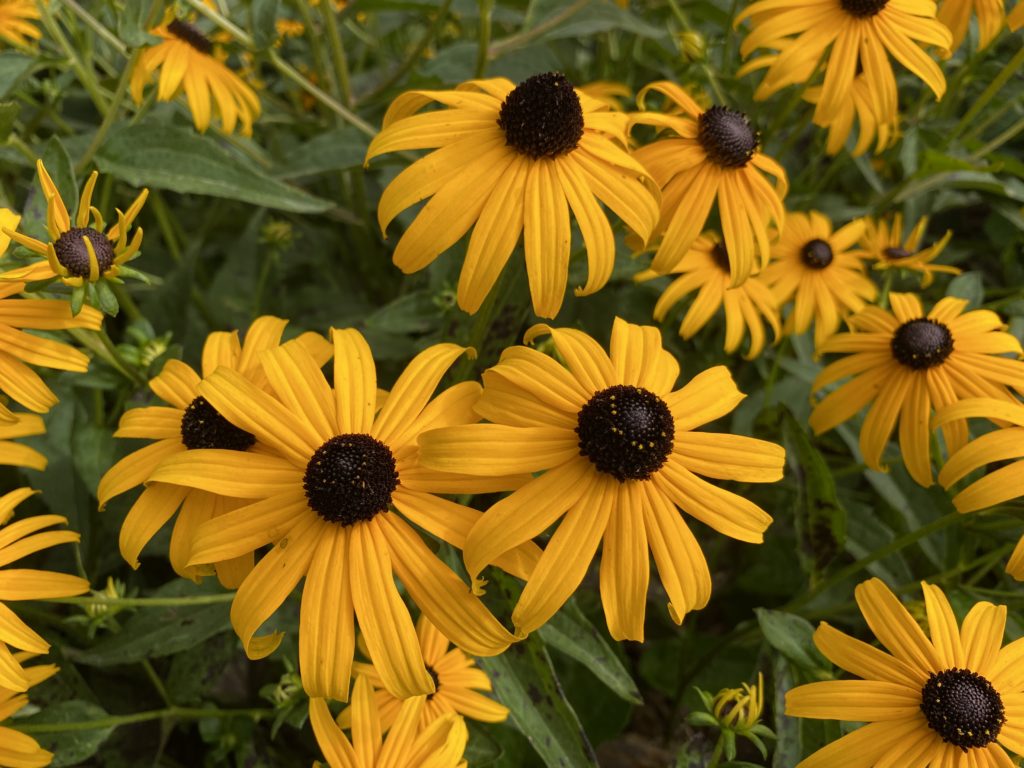
Rudbeckia nitida ‘Herbstonne’, commonly known as black eyed susan, is a strikingly yellow flowering perennial that attracts butterflies. Black-eyed susan tolerates hot and humid weather, and blooms from June to August. Herbstonne is synonymous with Autumn sun, and fills the Greenway with color from the North End to Dewey Square.
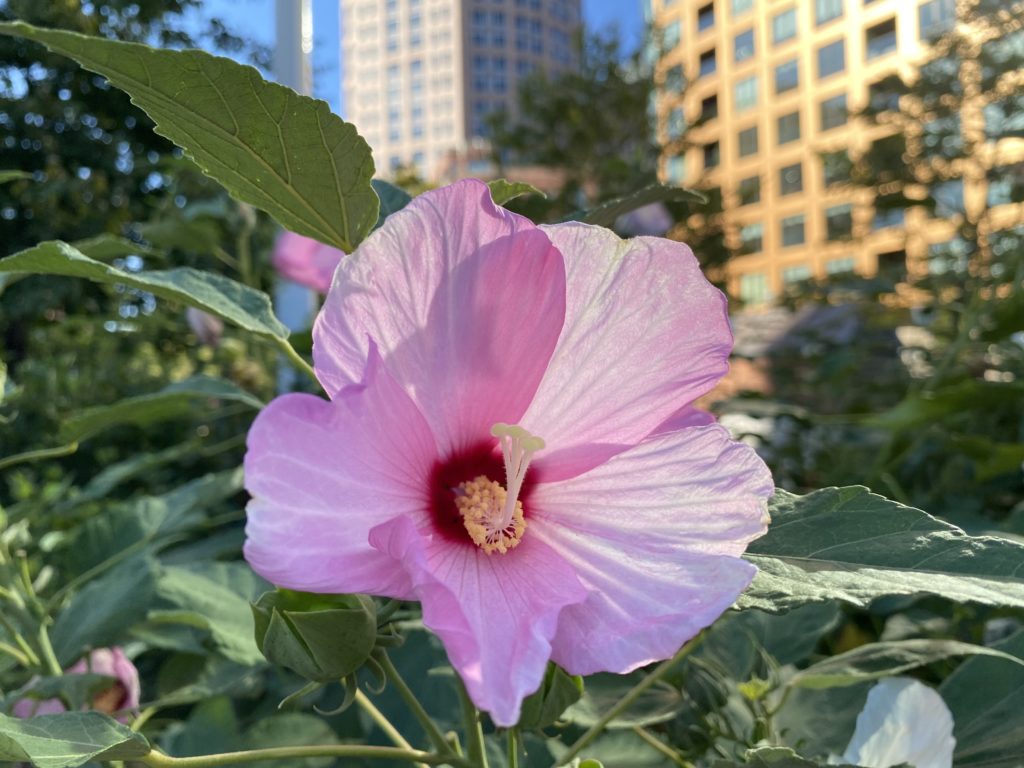
Hibiscus moscheutos and hybrid Hibiscus ‘Lord Baltimore” is our common swamp mallow. Bring on the showy plants for mid and late summer! These grow up to 6 feet high on thick, beefy stems and the hybrids hold out blooms up to a foot across. The quieter, native moscheutos species characteristically has blossoms 3 to 5 inches. Each flower is short lived but shows off a deep contrasting colored throat, while both the buds and lingering seed pod structures are intricate and ornamental. Many people associate hibiscus with warm climates but these beauties are completely hardy to minus 20 degrees and should continue to bloom into late September.
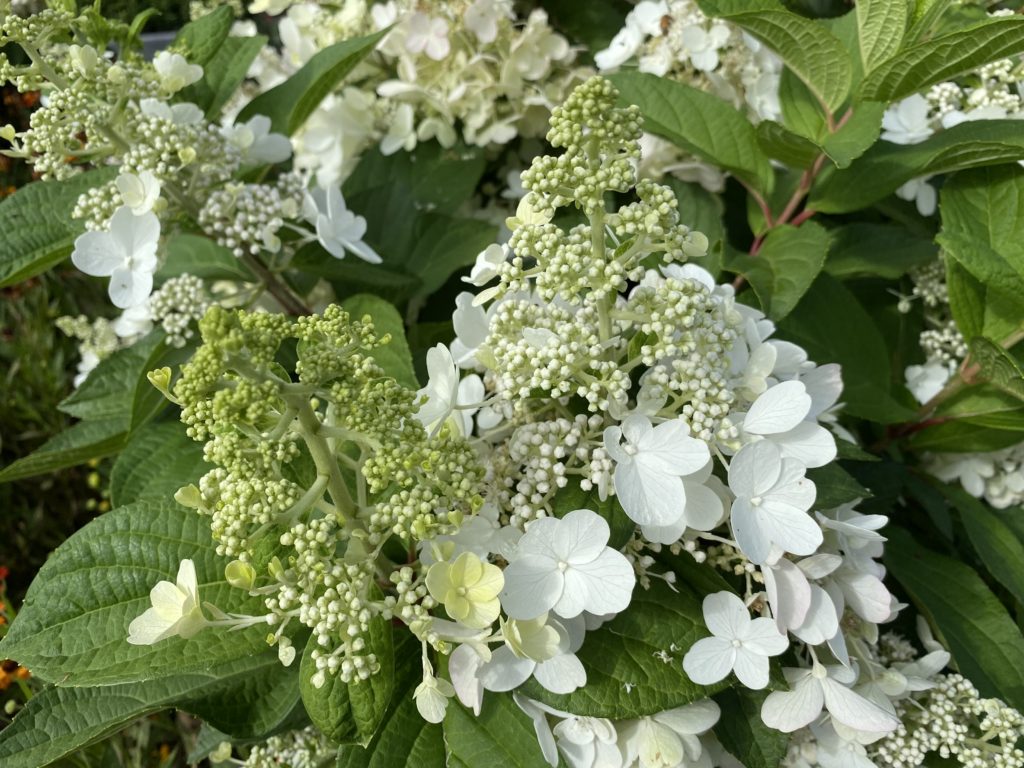
On The Greenway, we love Hydrangeas. This large family of flowering shrubs, with over 70 distinct species, has been embraced by horticulture lovers for centuries. Now widely hybridised for larger flowers, and smaller plants, there are many options available from local garden centers and specialized growers. The reliably blooming Hydrangea paniculata, producing large white to pink blooms from mid July into late August, is both elegant and eye arresting. The large flowers tend toward a pointed, pyramidal form, standing at the terminal ends of new branches. The character of the blossoms is chameleon-like, changing over time as the flowers fade to porcelain pinks, antique blushes and then often a papery silver.
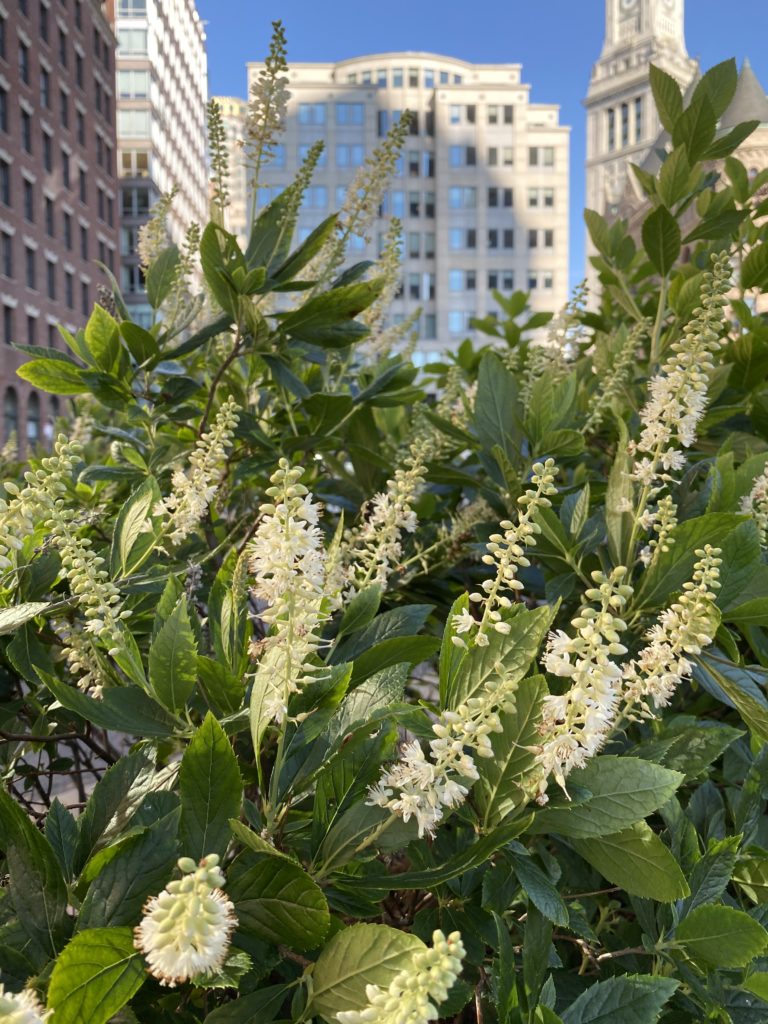 Clethra alnifolia is a native woodland shrub scenting whole areas with their distinct, and slightly musty, fragrance. The common name summersweet says it all. Even here in the busy downtown corridor you can tell when they are in bloom by the scent wafting on the breeze. The shiny, waxy leaves and spires of white flowers are a wonderful addition to mid and late summer blooms. The bees and insects visit these important summer pollinator supporters often and repeatedly. While thriving in moist soils and wetland edges their waxy leaves help conserve moisture during summer dry spells, contributing to the popularity of these adaptable mid sized shrubs.
Clethra alnifolia is a native woodland shrub scenting whole areas with their distinct, and slightly musty, fragrance. The common name summersweet says it all. Even here in the busy downtown corridor you can tell when they are in bloom by the scent wafting on the breeze. The shiny, waxy leaves and spires of white flowers are a wonderful addition to mid and late summer blooms. The bees and insects visit these important summer pollinator supporters often and repeatedly. While thriving in moist soils and wetland edges their waxy leaves help conserve moisture during summer dry spells, contributing to the popularity of these adaptable mid sized shrubs.
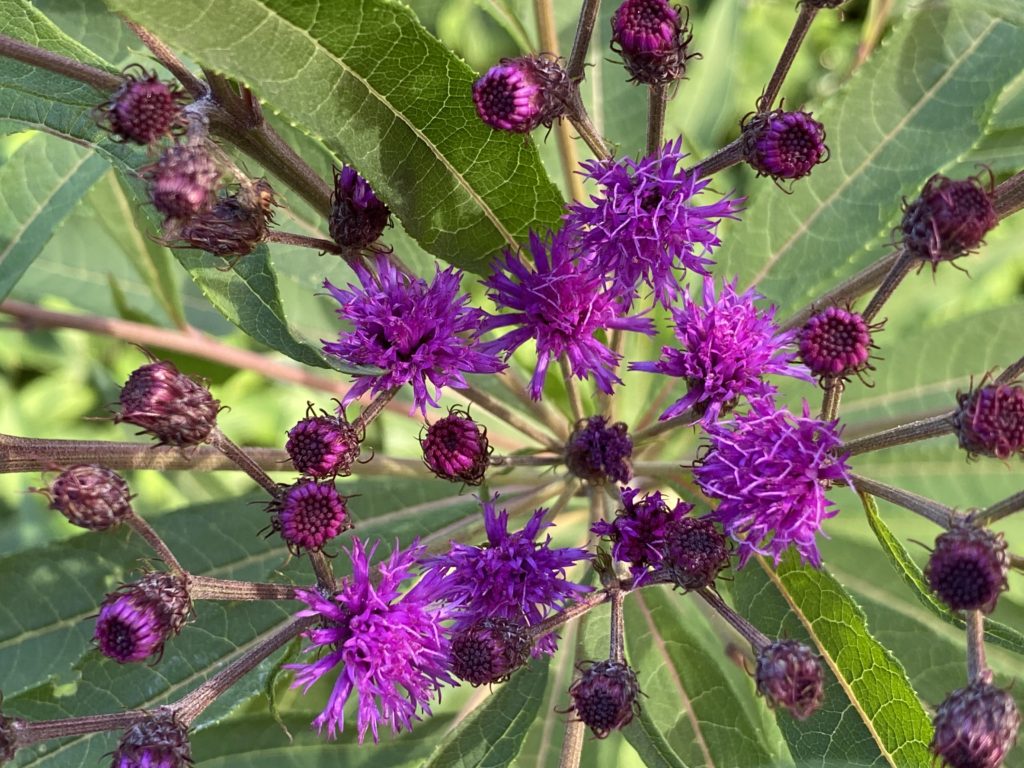
Vernonia noveboracensis, often referred to as New York ironweed, is adapting itself nicely to The Greenway and downtown Boston. A tall and imposing plant, this is one we allow to self seed around within reason. Filling empty niches and surprising us each year with a new location or two, these North American native plants, with small but intensely colored flowers, add a great deal to our late summer show. The vibrant purple tufted flowers are eye catchers – bringing you in for a closer look, or directing your eye to the back of a lush, leafy green garden bed. The seed heads hold up well into late winter, the perfect disc to catch early frost or dew and creating a different kind of sparkle in the garden.



